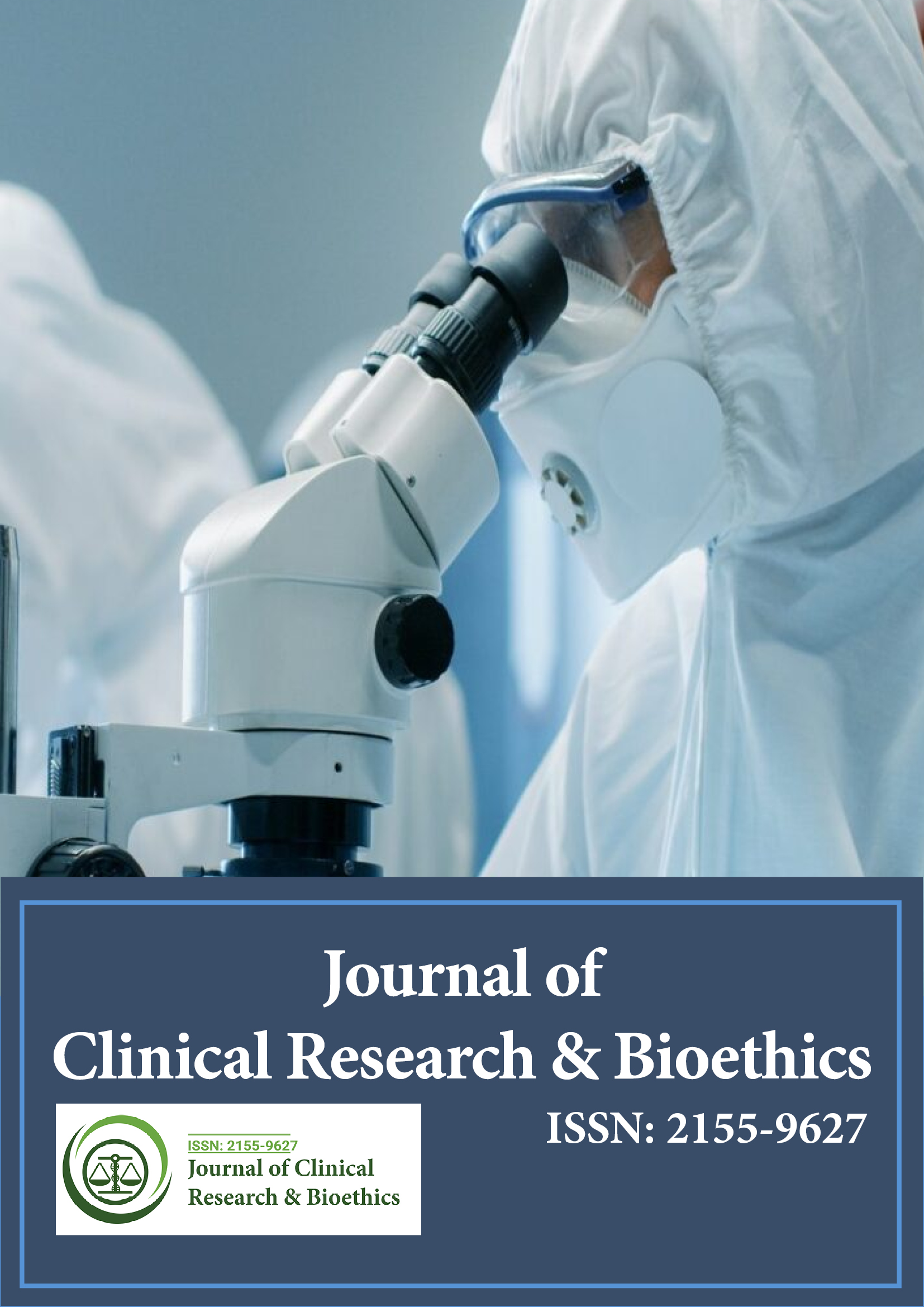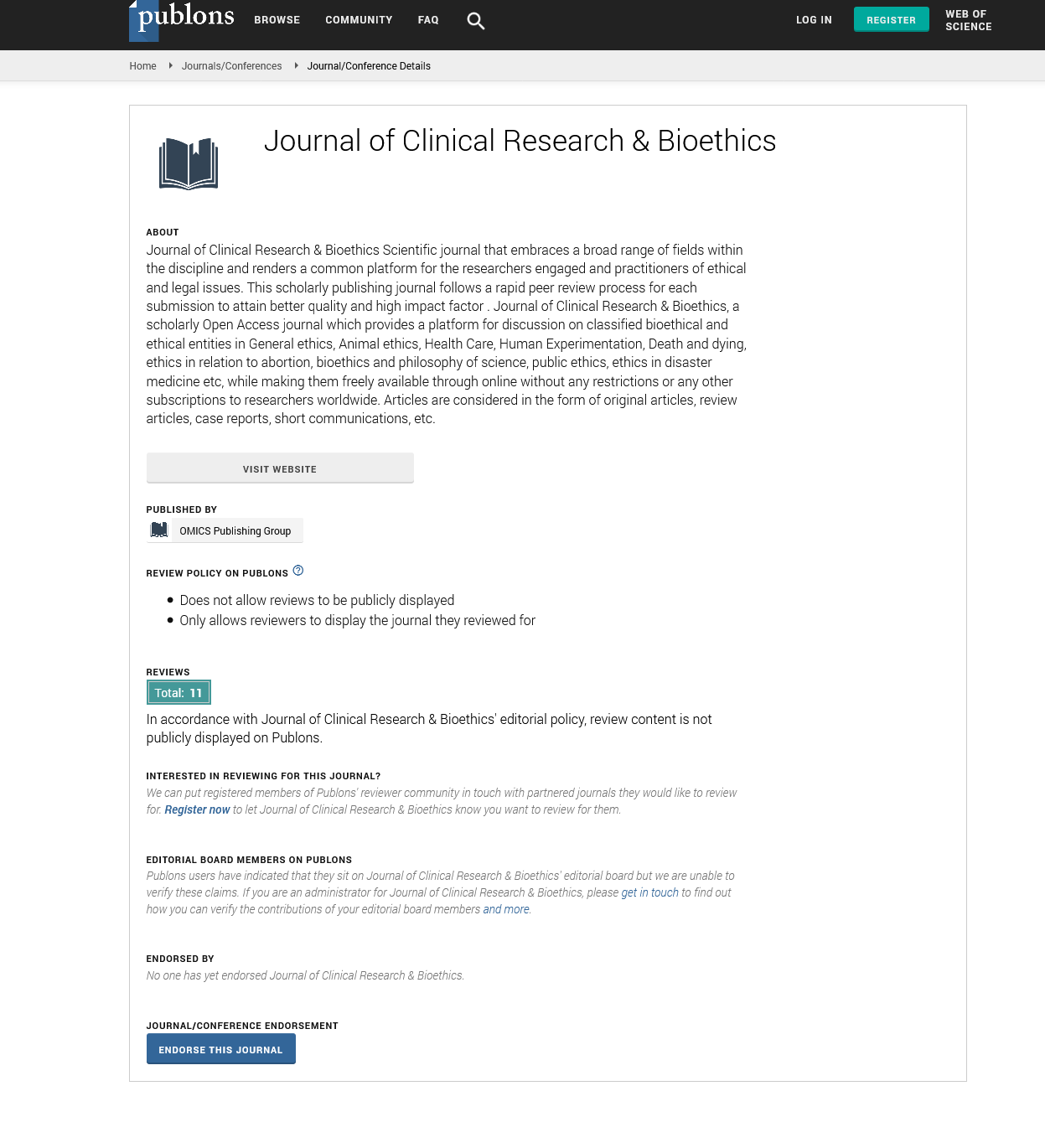Indexed In
- Open J Gate
- Genamics JournalSeek
- JournalTOCs
- RefSeek
- Hamdard University
- EBSCO A-Z
- OCLC- WorldCat
- Publons
- Geneva Foundation for Medical Education and Research
- Google Scholar
Useful Links
Share This Page
Journal Flyer

Open Access Journals
- Agri and Aquaculture
- Biochemistry
- Bioinformatics & Systems Biology
- Business & Management
- Chemistry
- Clinical Sciences
- Engineering
- Food & Nutrition
- General Science
- Genetics & Molecular Biology
- Immunology & Microbiology
- Medical Sciences
- Neuroscience & Psychology
- Nursing & Health Care
- Pharmaceutical Sciences
Perspective - (2023) Volume 14, Issue 1
Antihistamines for the Treatment of Infectious Diseases and for the Post-Acute Effects of SARS-CoV-2
Spagnolo Roehr*Received: 01-Jan-2023, Manuscript No. JCRB-23-19849; Editor assigned: 03-Jan-2023, Pre QC No. JCRB-23-19849 (PQ); Reviewed: 17-Jan-2023, QC No. JCRB-23-19849; Revised: 24-Jan-2023, Manuscript No. JCRB-23-19849 (R); Published: 03-Feb-2023, DOI: 10.35248/2155-9627.23.14.452
Description
Antihistamines are a class of drugs frequently used to treat allergy symptoms. These medications aid in the treatment of ailments caused on by an excess of histamine, a substance produced by the human body immune system. People who experience allergic reactions to pollen and other allergens are the ones who most frequently use antihistamines. They are also used to treat a wide range of other illnesses, including anxiety, cold, and gastrointestinal issues.
Post-Acute Sequel of SARS-CoV-2 infection (PASC) is a new illness marked by lingering symptoms that last longer than they should. Additionally, symptoms often change over time, with over 200 patient-reported symptoms indicating the involvement of different organ systems. With a 30% prevalence estimate, PASC is a global health issue. PASC frequently interferes with daily functioning and is uncomfortable and incapacitating. According to the centers for Disease Control and Prevention (CDP) in the United States (US), two-thirds of SARS-CoV-2 patients who are hospitalised develop PASC within six months of infection. Discovered that 11% of COVID-19 patients who were not hospitalised in California reported symptoms for at least 6 months after infection.
Based on in laboratory evidence and the availability of toxicological and pharmacological information, many antihistamine medications show potential to advance to clinical trials. But another issue could arise if high antihistamine doses are ultimately required to achieve efficacy. The development of repurposed antihistamines for off-label testing has been impeded by the general absence of comprehensive preclinical research. Collaborations between research organisations, granting organisations, and the government are necessary to balance the pharmaceutical industry's lack of interest in funding the required clinical trials.
The patient most certainly contracted SARS-CoV-2. SARS-CoV-2 testing was scarce at the time, and the US lacked a COVID-19 screening strategy. Within 72 hours of the exposure, the patient had acute tiredness, illness, and a headache. within ten days developed an wide rash over her front and back to the body. In addition to inspiratory chest pain, left side pain, a dry cough, a fever, night sweats, and gastrointestinal illness, there were ulcerations on the mouth, vocal cords, and inside of the lower lip. During the last 24 days of the acute sickness phase, and received some symptom recovery.
Groups of the symptoms were frequently present. For instance, they would initially have pain, redness, and mouth ulcerations before experiencing exhaustion and a unilateral headache a few days later. Other signs and symptoms were nausea, bruising of the arms, legs, and/or trunk, and infrequent, short-lived rashes on the chest. These were followed by rashes that persisted longer and were more extensive. Angiotensin-converting enzyme 2 receptors are widely distributed and expressed throughout the body when SARS-CoV-2 attaches to them, causing cellular infection, inflammation, and endothelial activation. SARSCoV- 2 can therefore impact every organ system. This could play a significant role in the variability of PASC symptoms and manifestations. Therefore, it is possible for Nurse Practitioners (NPs) to see notable variation in PASC symptoms among affected patients, and the course of symptom remission must not be established.
Due to the lack of valid and reliable testing at the start of the US pandemic, the early patients with PASC may not have had access to SARS-CoV-2 confirming testing because of this, some people with PASC have been neglected or rejected by healthcare professionals. Such patients may have a sense of powerlessness and devaluation as a result, which may have a negative impact on their health and willingness to attend subsequent doctor's consultations. Therefore, healthcare professionals should become aware with the evolving spectrum of PASC symptoms and offer compassionate, supportive care.
Citation: Roehr S (2023) Antihistamines for the Treatment of Infectious Diseases and for the Post-Acute Effects of SARS-CoV-2. J Clin Res Bioeth. 14:452.
Copyright: © 2023 Roehr S. This is an open-access article distributed under the terms of the Creative Commons Attribution License, which permits unrestricted use, distribution, and reproduction in any medium, provided the original author and source are credited.

